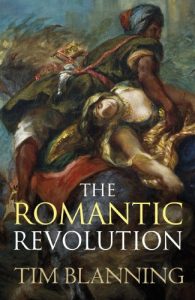A compelling and persuasive account of how the Romantic Movement permanently changed the way we see things and express ourselves.
Three great revolutions rocked the world around 1800. The first two - the French Revolution and the Industrial Revolution - have inspired the greatest volume of literature. But the third - the romantic revolution - was perhaps the most fundamental and far-reaching. From Byron, Wordsworth, Coleridge and Burns, to Beethoven, Wagner, Berlioz, Rossini and Liszt, to Goya, Turner, Delacroix and Blake, the romantics brought about nothing less than a revolution when they tore up the artistic rule book of the old regime.
This was the period in which art acquired its modern meaning; for the first time the creator, rather than the created, took centre-stage. Artists became the high priests of a new religion, and as the concert hall and gallery came to take the place of the church, the public found a new subject worthy of veneration in paintings, poetry and music. Tim Blanning's sparkling, wide-ranging survey traces the roots and evolution of a cultural revolution whose reverberations continue to be felt today.






